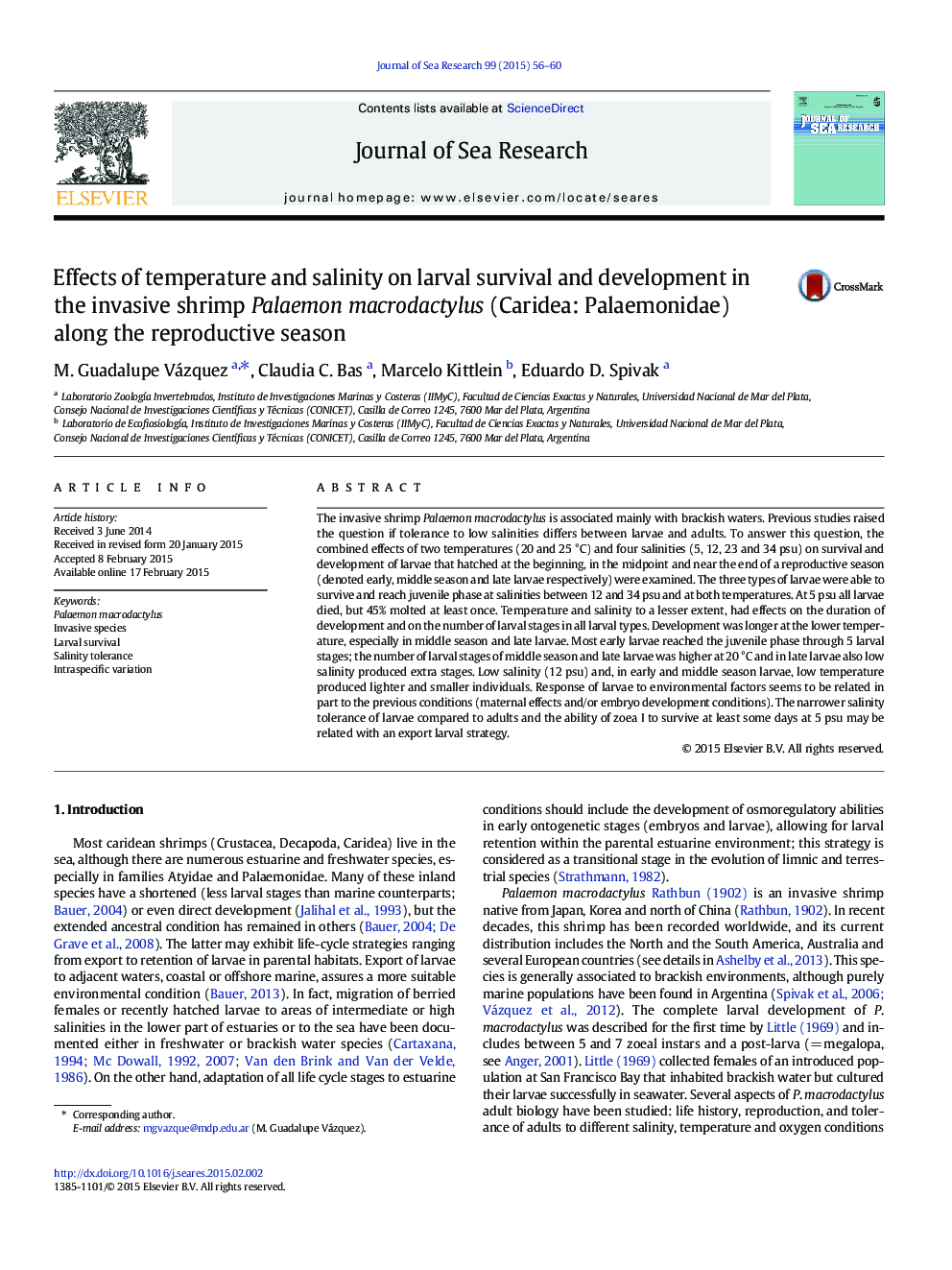| کد مقاله | کد نشریه | سال انتشار | مقاله انگلیسی | نسخه تمام متن |
|---|---|---|---|---|
| 4549676 | 1627475 | 2015 | 5 صفحه PDF | دانلود رایگان |

• P. macrodactylus larvae were reared at 3 salinities and 2 temperatures.
• Larval responses depended on the time of hatching in the reproductive season.
• Larvae reach juvenile phase between 12 and 34 psu and at 20 and 25 °C.
• Larvae tolerated a narrower salinity range than adults.
The invasive shrimp Palaemon macrodactylus is associated mainly with brackish waters. Previous studies raised the question if tolerance to low salinities differs between larvae and adults. To answer this question, the combined effects of two temperatures (20 and 25 °C) and four salinities (5, 12, 23 and 34 psu) on survival and development of larvae that hatched at the beginning, in the midpoint and near the end of a reproductive season (denoted early, middle season and late larvae respectively) were examined. The three types of larvae were able to survive and reach juvenile phase at salinities between 12 and 34 psu and at both temperatures. At 5 psu all larvae died, but 45% molted at least once. Temperature and salinity to a lesser extent, had effects on the duration of development and on the number of larval stages in all larval types. Development was longer at the lower temperature, especially in middle season and late larvae. Most early larvae reached the juvenile phase through 5 larval stages; the number of larval stages of middle season and late larvae was higher at 20 °C and in late larvae also low salinity produced extra stages. Low salinity (12 psu) and, in early and middle season larvae, low temperature produced lighter and smaller individuals. Response of larvae to environmental factors seems to be related in part to the previous conditions (maternal effects and/or embryo development conditions). The narrower salinity tolerance of larvae compared to adults and the ability of zoea I to survive at least some days at 5 psu may be related with an export larval strategy.
Journal: Journal of Sea Research - Volume 99, May 2015, Pages 56–60